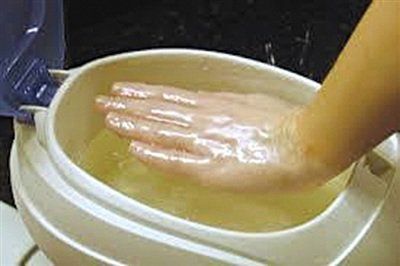This is an automatically translated article.
Physiotherapy in the treatment of sciatica is a method of using physical agents to act on the injured area to improve mobility, reduce nerve compression, increase blood circulation to help relieve pain, Accelerate the natural recovery of the lumbar spine and sciatic nerve.
1. Physical therapy exercises for active sciatica
1.1. Dove Pose lying on your back
Lying on the back, bring the right leg up, in which the thigh to the shin forms a 90 degree angle to each other, the shin is facing forward. Hold the thigh area with both hands, fingers interlaced to keep it tight. Place the left foot on the right leg so that the left ankle touches the right knee. Use your hands to pull the right thigh and leg as close to the abdomen as possible. Hold this position for a moment and then release, repeat the movement with the other leg.
1.2. Sitting pigeon pose
Sitting position, extend legs straight forward Bend right leg up, place right foot on left leg so that right ankle touches left knee knee. Begin to bend forward so that your upper body is close to your thighs. Hold for 15 - 30 seconds. Relax for a few seconds and repeat with the other leg.
1.3. Forward-facing pigeon pose
Kneeling position with hands, knees, feet all touching the floor Lift right foot forward so that right foot is directly in front of left knee Extend left leg back as far as possible Shift muscle weight can move from arms to legs to lift the body. Take a deep breath in and as you exhale, lean your upper body forward, using your arms to lift your body as high as possible. Repeat the movement with the other side
1.4. Pose bringing the knee to the opposite shoulder
Lie on your back, legs straight and extended. Grab your right leg with both hands. Use your hands to pull your right knee toward your left shoulder and hold the position for 30 seconds. Push the knee back to the starting position, repeat 3 times, then switch sides

Tư thế đưa đầu gối đến vai đối diện
1.5. Sitting posture stretches the spine
Sitting position, legs extended straight forward Cross left leg out to right leg Cross right hand over left thigh, left hand quickly down to the floor to keep balance, then gently rotate body to the left Hold the pose for 30 seconds, repeat 3 times, then switch sides
1.6. Standing posture stretching hamstring muscles
Place left foot on a wall or other surface at hip height or lower. Straighten your legs as much as possible. Bend forward, the deeper you bend, the more the muscles will be stretched, but don't try so hard that you feel pain Hold the position for at least 30 seconds, then repeat with the right leg
2. Physiotherapy exercises for passive sciatica
2.1. Stretching the spine on the DTS . machine
DTS spinal stretcher is a specialized device to help treat diseases related to spinal degeneration and disc herniation. The dilation will be adjusted by your doctor to suit your medical condition.
2.2. Electrotherapy
Electrotherapy is a method of using electric current with appropriate power to act on cells, nerves, muscles, and tendons under the skin, helping to reduce pain and stimulate quick recovery. Electrotherapy is the common name for many different methods such as electrical pulses, shock waves, ultrasound, etc.
Electric pulse: Electropulsation is often used in the treatment of local pain relief, sciatica with muscle atrophy and leg muscle weakness. Time for each pulse can last 20-30 minutes depending on the purpose of treatment. Therapeutic ultrasound: Ultrasound is particularly effective in relieving pain and softening paraspinal muscles. Shock wave: Shock wave is a very good anti-inflammatory pain reliever, applied to patients with a lot of pain and pain caused by inflammation.
2.3. Heat therapy
Heat therapy is often used for the purpose of pain relief, anti-spasmodic, increased blood circulation and increased metabolism of nutrients. In particular, using infrared lights, short waves, and hot compresses are the most common measures. However, people with acute sciatica should not use this measure.
2.4. Use a spinal fixation belt
When the pain increases, the use of a spinal belt will have an analgesic effect. In addition, the spinal belt helps reduce pressure on the herniated disc, especially for patients who often travel a lot by car, sit a lot, walk a lot.
Physical therapy exercises are effective in the treatment of sciatica. Patients can apply the above exercises to minimize symptoms and avoid dangerous disease complications.
Vinmec International General Hospital is the address for examination, treatment and prevention of diseases, including Neurology. When performing the examination process at Vinmec, customers will be welcomed and used modern facilities and equipment along with perfect medical services under the guidance and advice of experts. Good doctors, well-trained both at home and abroad.
Please dial HOTLINE for more information or register for an appointment HERE. Download MyVinmec app to make appointments faster and to manage your bookings easily.













